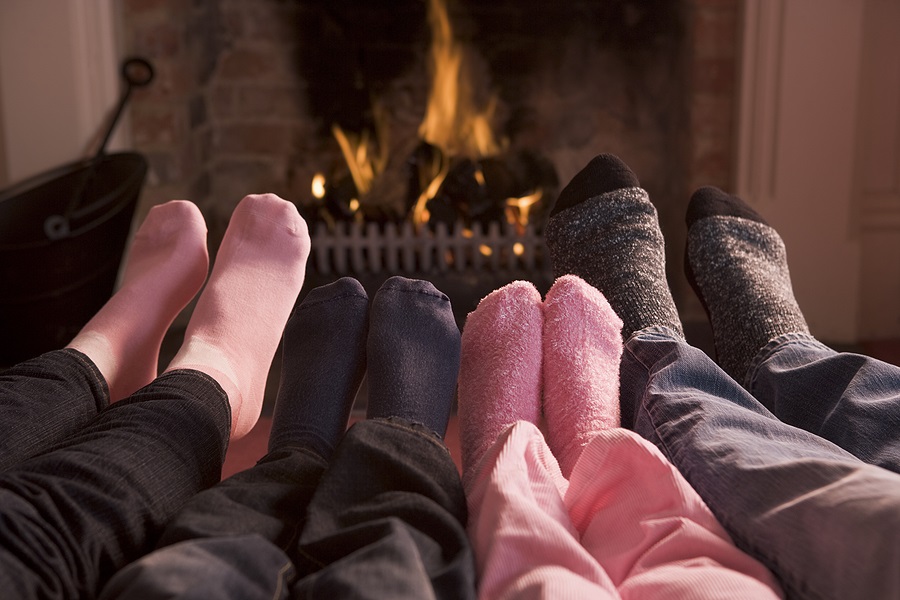
It’s that time of year again, when the days grow shorter, temperatures drop, and winter makes its approach. We’ve shared winter home preparation tips before, but as the seasons change, it’s crucial to revisit these important steps. Preparing your home for colder weather in Ireland not only ensures warmth and comfort, but also protects your property from wet, windy, and unpredictable conditions. Here’s a refresher on how to get your home winter-ready:-
1. Inspect Heating Systems
- Arrange a professional service for your boiler or heating system to ensure it’s running efficiently.
- Bleed radiators to remove air pockets and improve heat distribution.
- If you rely on a fireplace, make sure chimneys are cleaned and clear of blockages.
2. Seal Windows and Doors
- Apply weatherstripping to doors to block drafts and prevent water leaks.
- Inspect window seals and consider secondary glazing for older windows, enhancing insulation and reducing heat loss.
3. Clean Gutters and Drains
- Our rainy winters make it vital to clear leaves and debris from gutters to prevent water buildup.
- Ensure that drains and gullies are free of obstructions to prevent flooding.
4. Check Home Insulation
- Proper attic, wall, and floor insulation will help retain warmth and reduce dampness.
- Consider upgrading insulation if it’s outdated, ensuring maximum energy efficiency.
5. Protect Against Damp
- Use dehumidifiers in moisture-prone areas to reduce the risk of mould and mildew.
- Ensure proper ventilation, especially in kitchens and bathrooms, to prevent condensation and damp build-up.
6. Garden and Outdoor Preparations
- Secure or store outdoor furniture and ornaments to avoid damage during winter storms.
- Inspect trees for loose branches that could fall during high winds, and trim where necessary.
7. Roof and Attic Inspection
- Check your roof for loose or missing tiles and have them repaired before bad weather hits.
- Ensure your attic is properly insulated and ventilated to prevent heat loss and dampness.
8. Install Draft Excluders
- Draft excluders are an affordable way to prevent cold air and moisture from entering under external doors, improving energy efficiency.
9. Check Smoke and Carbon Monoxide Detectors
- As heating systems are used more frequently in winter, it’s essential to make sure smoke and carbon monoxide detectors are functioning properly.
10. Prepare for Power Outages
- Winter storms can sometimes lead to power disruptions. Have a torch, candles, and a battery-powered radio ready, and keep your mobile devices fully charged in case of a forecasted storm.
11. Winter Footwear and Clothing
- Keep winter boots or wellies near your entrance to prevent tracking mud and water through the house.
- Stock up on warm blankets, and consider thermal curtains to keep the heat in and cold air out.
Conclusion:
Winterising your home is a smart move to prepare for wet, windy, and chilly weather. Whether you’re insulating to save on heating bills or protecting your home from the elements, taking action now ensures comfort and helps avoid costly damage later. These simple steps can make a big difference in how your home handles the winter season.
And if you need assistance with any of these tasks, remember, you can always post your job on www.tradesmen.ie to receive multiple quotes from local professionals. Stay warm and winter-ready!
Cheers
Oliver Dempsey
Tradesmen.ie
15 October 2024
General Tips for hiring a tradesman
Here are some tips to consider when hiring a tradesman:-
1. Ask for phone numbers of references so that you can check them out
2. Check insurance of the tradesman where insurance is required
3. Hire a suitably qualified architect, building surveyor or building engineer if the job is anything to do with a new build, building renovation or extension






